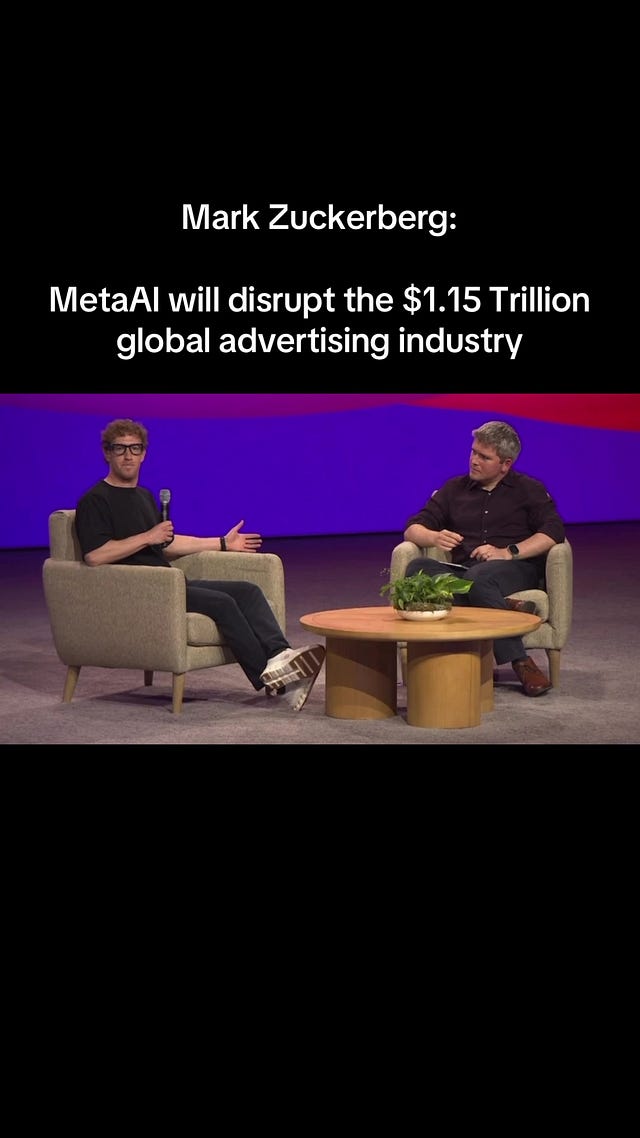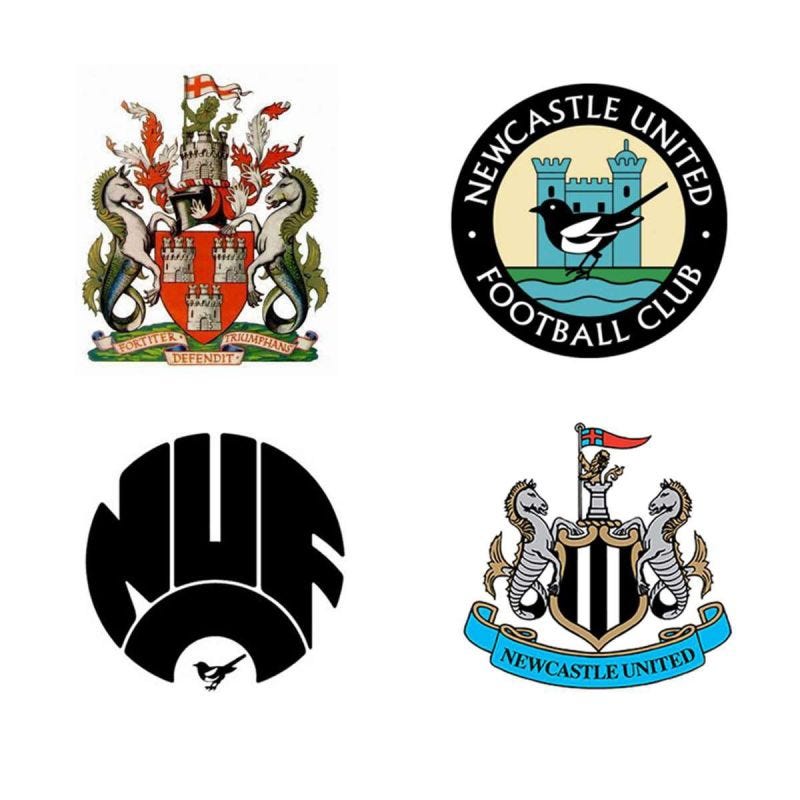Buffett, cathedrals and casinos; Peak F1 aka, Is there a sale on at Liberty's; Lausanne's warm bath; Wonky IOC Kodak comparisons; Tifos and Logo Wars; The E Word; Duff shortenings; Funnel balls
Overthinking the sports business, for money
The US rights auction as Peak F1
F1 is in the final year of its three-year extension with ESPN paying an estimated $75 million to $90 million annually. ENP with ESPN expired late 2024. There are high expectations at F1 that a new deal will double rights fees – they want something in the region of $160 to $180m. As a comparison, NASCAR’s deal for 2025 to 2031 is $7.7bn, or $1.1bn a year.
The last few years have been all about America.
Miami and Vegas, Cadillac’s entry, Drive to Survive on Netflix and Brad Pitt shooting a film in the pit lane.
Murray Barnett asks a good question in The Bundle - see clip below.
If you were Liberty, when would you sell F1?
Hear the full episode of The Bundle here:
Sport with a capital S
Just back from Lausanne, having run a live podcast at The Spot event (excellent, btw).
The venue was part of the story.
The Olympic Museum on Lake Geneva is a monument to sport. Proper sport. The peak of human competition.
48 hours in OlympicWorld is a useful antidote to the day to day sports business conversation. Every now and then, everyone who works on the business side should be made to go to Lausanne as part of their contract.
The air is different, literally and metaphorically. Purer.
This has implications.
People who work for the IOC talk of the slowness of trying to get things done, the suspicion of anything new, the patronising attitudes toward those on the sale side who generate the money that pays for the ivory tower from which they view the lake.
Yes, the IOC’s Lausanne home is a monument to sport. But it’s also a monument to television rights.
Ivory towers and cathedrals
The Lausanne view of the sports business has echoes in Warren Buffet’s farewell address to Berkshire Hathaway shareholders last week, which framed America as a cathedral with a casino attached:
‘Make Sure That The Cathedral Is Not Overtaken By The Casino'
The Sage of Omaha was in part - maybe, probably - digging at Trump and Musk’s zero sum version of American capitalism.
Run sport through Buffett’s metaphor and you quickly get to OlympicWorld as the cathedral with the sportsbiz as casino. That would be Thomas Bach’s worldview anyway.
It’s nice to visit Lausanne, but I wouldn’t want to live there. It’s very seductive, like a warm bath.
Having said all that, you’d expect me to go straight to the Kodak conclusion, you know the one, where the big monopoly fails to respond to a changing world.
It’s such a good story that it’s much misused as a case study, often weaponised to slag off an incumbent, painting them as fat and complacent.
The details are more interesting, as ever. (from HBR’s Kodak’s Downfall Wasn’t About Technology).
The right lessons from Kodak are subtle. Companies often see the disruptive forces affecting their industry. They frequently divert sufficient resources to participate in emerging markets. Their failure is usually an inability to truly embrace the new business models the disruptive change opens up. Kodak created a digital camera, invested in the technology, and even understood that photos would be shared online. Where they failed was in realizing that online photo sharing was the new business, not just a way to expand the printing business.
I don’t believe for a minute that the IOC is sleepwalking to irrelevance, or that the people working in Switzerland are choosing to ignore the ticking clock of the media rights market.
The word from Two Circles Sports IP Revenue League is that they’re doing just fine.
It doesn’t mean that there’s not big decisions awaiting Kirsty Coventry, or that the price point of the Olympic bundle might have peaked or that the whole thing needs to respond to the demands of the scroll.
But it ain’t about to be replaced in cultural relevance by some Paul brother scam or the Sidemen either…
Random aside: for larks, I put ‘IOC’s Kodak Moment’ in to Google’s Gemini AI. It didn’t get the joke.
The E word
Entertainment is a trigger word in OlympicWorld.
It seems to have made the journey to becoming a euphemism for the overt commercialisation of sport: Sport as product.
Which is why we used it as our session provocation.
Supertri founder Michael D’hurst was a panellist and wrote a good summary of the session.
And then came the inevitable question: Where does the money come from and where does it go? With rights fees consolidating around the biggest sports, the rest of us need new models. If you’re not careful, you’ll grow the pie - only for someone else to eat it.
You quickly get to the big question, which is: what’s the difference between sport and entertainment?
To be discussed etc.
A shoutout for a nice phrase, from Jo Redfern:
"interest spans have shortened, not attention spans. If content maintains interest, attention spans are just as long as they ever were”.
Which suggests that the great shortening might be a duff move. Content length should be context-dependent; while some content needs to be short (e.g., 15-second TikToks), longer form content can work if it’s…interesting and justifies the time. Who knew?
Help, I’m going the wrong way up the funnel, pt2
See previous - Funnel as Cockroach
Mentioned previously, I’m losing faith in the funnel as the defining sports marketing metaphor, not least because I appear to be moving up it rather than down, which is what every digital strategist tells me should be happening.
The sports version is derived from the classic sales funnel, the cockroach of marketing strategic thought, that presents a linear and hierarchical ‘AIDA’ model (Attention, Interest, Desire, Action) which has its roots in the door-to-door sales era of the late 19th century as a way to teach salespeople how to push buyers towards a sale in a single conversation. This last quote is from the definitive critique of the funnel, click here).
Every sport has co-opted it to visualise the pathway from awareness to action, defined as either playing or watching their game.
It’s present in every conversation and used as a justification for new sports properties that come with the faux-scientific ‘top of the funnel’ stamp of approval.
My other question is, what’s action now?
Television used to be defined as the top of the funnel - the basis of the Inspiration Story, a trillion dollar idea that kids watch and then go and do sport, preferably outside.
It’s the idea that funded the IOC HQ in Lausanne.
But is it true?
Was it ever true?
The funnel creates an incentive to over promise at the top end, and ignores the really hard work in the middle.
Google’s Messy Middle
Spoiler: People are irritating.
They don’t behave in a linear fashion, as often assumed by marketers.
Google knows this better than any other organisation on earth.
That’s why its own view of the funnel is worth consideration.
See also:
Anyone else getting a load of club badge content?
Big week for logos.
Enjoyed this to and fro between Eddie May and Matt Hymers about Newcastle’s re-cresting.
Matt Hymers: Alienating the core local and loyal fans base by changing the crest to some lifeless logo a la Juventus or inter ( which the club insanely use as shining examples of the future 🤮) will only serve to make the job of growing the fan base more difficult, not easier. This is an exercise in justifying the existence and fees of creatives and agencies leeching off clubs. Nothing more. It’s a disgrace. Consistency is what breeds history and traditions constant change undermines it and Newcastle’s crest has been a bastion for its fans through thick and thin. It does not need to change and it shouldn’t.
See also:
This gets us to Tifos, a big theme of the week on WhatsUP, the Unofficial Partner backchannel, prompted, I think, by this on BBC Sport:
Like a fool, I asked about provenance.
Meanwhile, this bloke’s cleaning up.
Thanks for reading.
Share this newsletter with your friends and family.
Now click the Fucking Like Button, I Mean How Fucking Hard Can It Fucking Be????
It’s the heart shaped thing below, you fucking bell end. It’s the lowest form of human-to-internet engagement and for reasons we don’t quite understand helps us appear more popular with people who don’t yet receive the newsletter, most of whom are of no value in and of themselves, but who collectively add to the story that this newsletter is popular among a group we’ve started to call industry insiders.
We’re grateful for your help in this matter.















Yea, lots of real substance in here, but "almost definitely a Drive to Survive viewer" was the key takeaway here for me. Epic, Richard.
The Tifo discussion was prompted by me highlighting Sunderland’s rather good one this week!